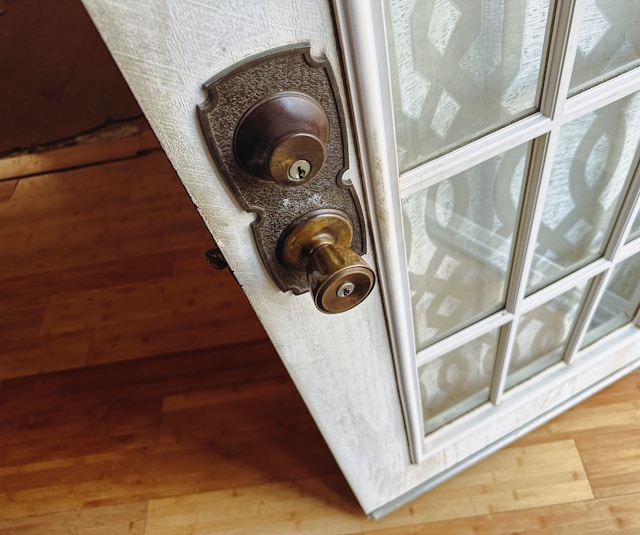Home is where we expect to feel safest, but unfortunately, burglaries are a common threat in many neighborhoods. Every year, thousands of homes are broken into, resulting in property loss, emotional distress, and a lingering sense of vulnerability. The good news is that there are many effective strategies to reduce the risk of intrusions. Whether you live in a house, apartment, or condo, knowing how to prevent break-ins and burglaries can help you protect your home, your belongings, and your peace of mind.
Secure All Entry Points
One of the simplest yet most important burglary prevention tips is to make sure all potential entry points are secure. Many break-ins occur because of unlocked doors or windows, or because of weak locks that are easy to force open.
-
Install solid-core or metal exterior doors, especially for front and back entrances.
-
Use deadbolt locks in addition to standard knob locks. Choose a lock with at least a one-inch throw bolt.
-
Secure all ground-floor windows with window locks, especially in vulnerable areas like basements.
-
Reinforce sliding doors with bars or dowels to prevent them from being pried open.
-
Don’t forget the garage lock both the door to the outside and the door into the house.
The more effort it takes to get inside, the less appealing your home becomes to burglars looking for an easy target.
Install a Home Security System
One of the most effective ways to protect your home from burglars is by installing a home security system. These systems can alert you and authorities to unauthorized activity, and their presence alone often deters criminals.
-
Consider a basic alarm system with sensors on doors and windows.
-
Add security cameras, especially visible ones at entry points, to discourage trespassing.
-
Use smart home systems that allow remote monitoring from your phone.
-
Opt for systems that include 24/7 professional monitoring for enhanced protection.
Even a simple doorbell camera or motion detector can provide real-time alerts and evidence in case of suspicious activity.
Use Outdoor Lighting and Motion Sensors
Burglars prefer to work under the cover of darkness. Adequate lighting around your home can be a powerful deterrent.
-
Install motion-activated lights at entrances, driveways, and blind spots.
-
Use dusk-to-dawn lighting near walkways and porches.
-
Ensure backyards, sheds, and alleyways are well-lit and difficult to access unnoticed.
Proper lighting makes it harder for intruders to approach your home without being seen and increases the chance that neighbors or passersby will spot them.
Maintain Your Property’s Appearance
A neglected property can signal to burglars that a home is vacant or that its owners are inattentive. Keeping up appearances is an important part of burglary prevention.
-
Mow your lawn regularly, and keep hedges trimmed.
-
Collect mail and packages promptly, or have a neighbor do so if you’re away.
-
Use smart plugs or light timers to turn lights on and off while you’re gone, making your home look occupied.
-
Avoid leaving trash bins out long after collection day, as this may suggest no one is home.
By maintaining your home’s exterior, you make it clear that someone is actively living there and paying attention.
Avoid Broadcasting Your Absence
One common mistake people make is sharing vacation plans or check-ins on social media, which can alert potential intruders that the house is empty.
-
Avoid posting your travel dates publicly online.
-
Share photos and trip updates after you return home.
-
Ask a trusted neighbor to check in regularly, park in your driveway, or move your trash bins.
Knowing how to prevent break-ins often comes down to thinking like a burglar don’t give them clues that your house is unattended.
Get to Know Your Neighbors
One of the oldest and most reliable home burglary prevention tips is simply being part of a vigilant community. Neighbors can serve as an extra pair of eyes and ears when you’re not around.
-
Join or start a Neighborhood Watch program.
-
Exchange contact information with a few trusted neighbors.
-
Watch out for suspicious activity and report it promptly.
-
Keep an eye on each other’s homes during vacations or extended absences.
Community involvement makes neighborhoods less attractive to criminals and helps everyone stay safer.
Use Smart Locks and Timers
Technology offers some convenient ways to improve home security without major investments. Smart devices are not only helpful but can be controlled remotely, allowing you to lock doors or turn on lights even when you’re away.
-
Install smart locks that allow keyless entry and remote locking/unlocking.
-
Use video doorbells to screen visitors and track package deliveries.
-
Program smart light bulbs or plugs to operate on a schedule or respond to motion.
These tools add a modern layer of protection and give you more control over your home’s security at all times.
Protect Valuables Inside the Home
Even with strong exterior defenses, it’s wise to secure your belongings in case a break-in does occur. Minimizing visibility and using physical safeguards inside your home can prevent significant losses.
-
Don’t leave expensive electronics, jewelry, or cash in plain view.
-
Use a fireproof, waterproof safe for storing important documents and valuables.
-
Close curtains or blinds at night to prevent outsiders from seeing inside.
-
Record serial numbers of electronics and take photos of valuable items for insurance purposes.
If a burglar does get inside, you’ll be better prepared to minimize the damage and file accurate reports.
Conclusion
Taking steps to improve home security doesn’t have to be overwhelming or expensive. By applying common-sense measures and using available technology, you can dramatically reduce your risk of becoming a victim. From securing doors and windows to installing lights and getting to know your neighbors, there are countless ways to stop home invasion attempts before they happen.










